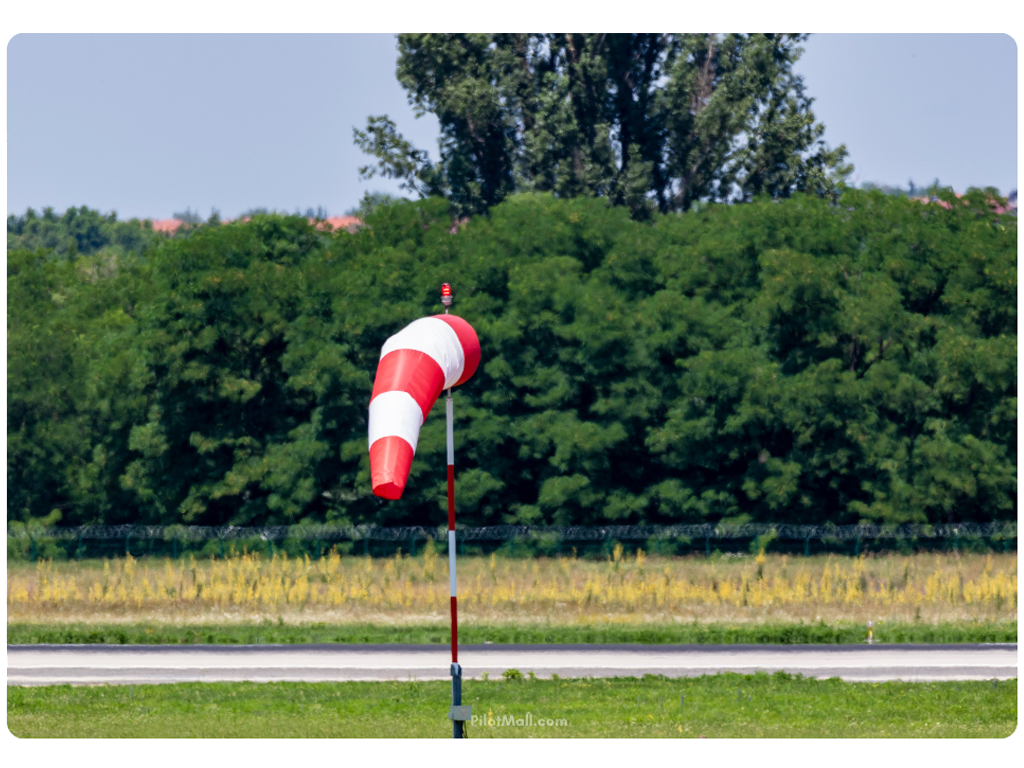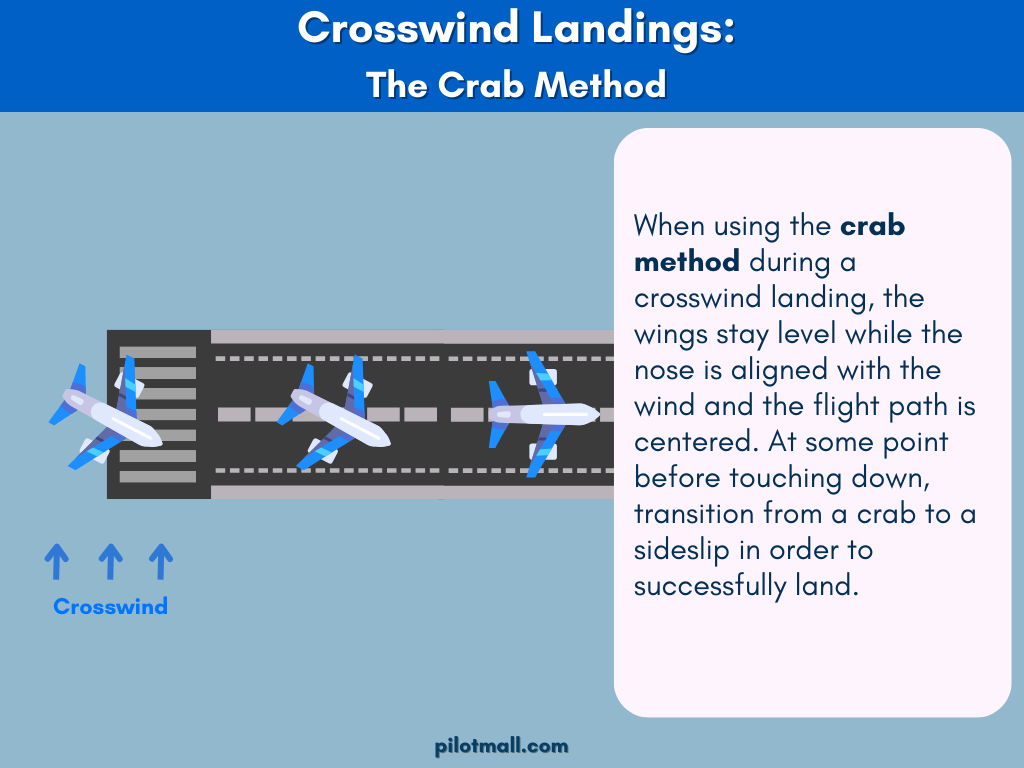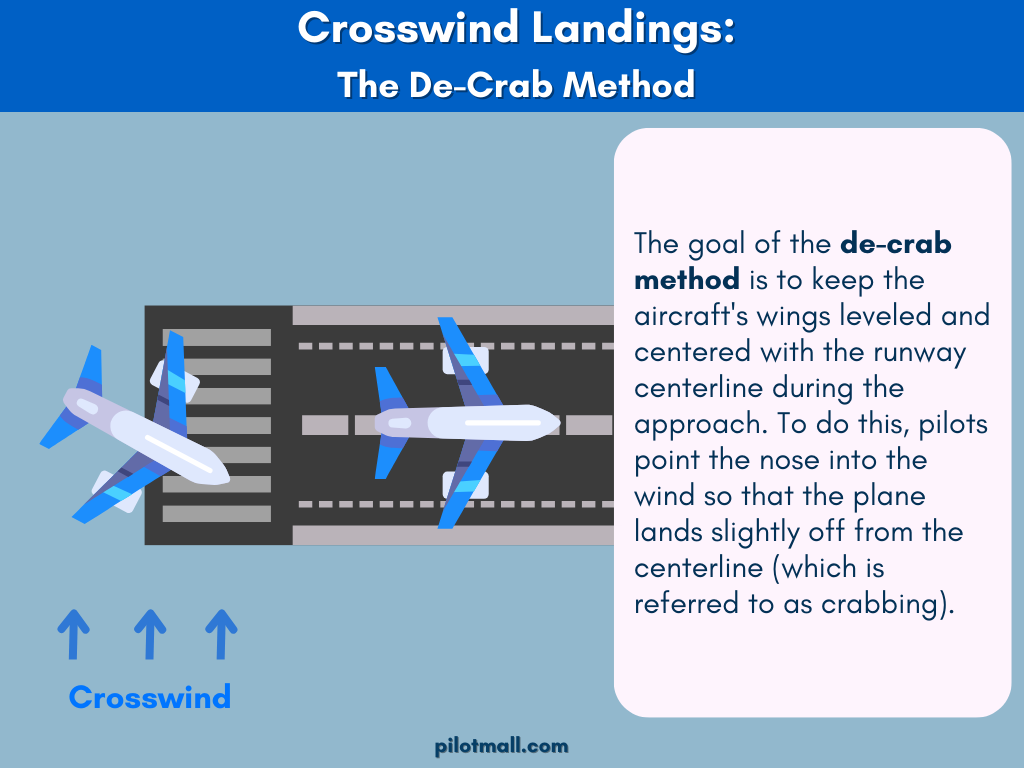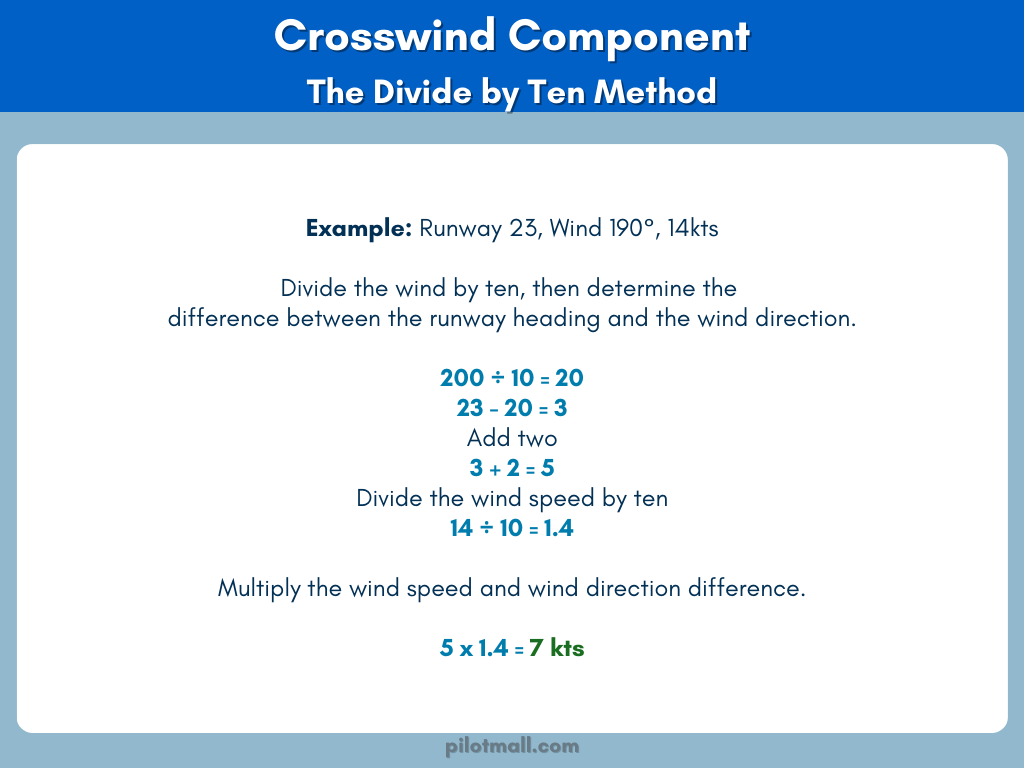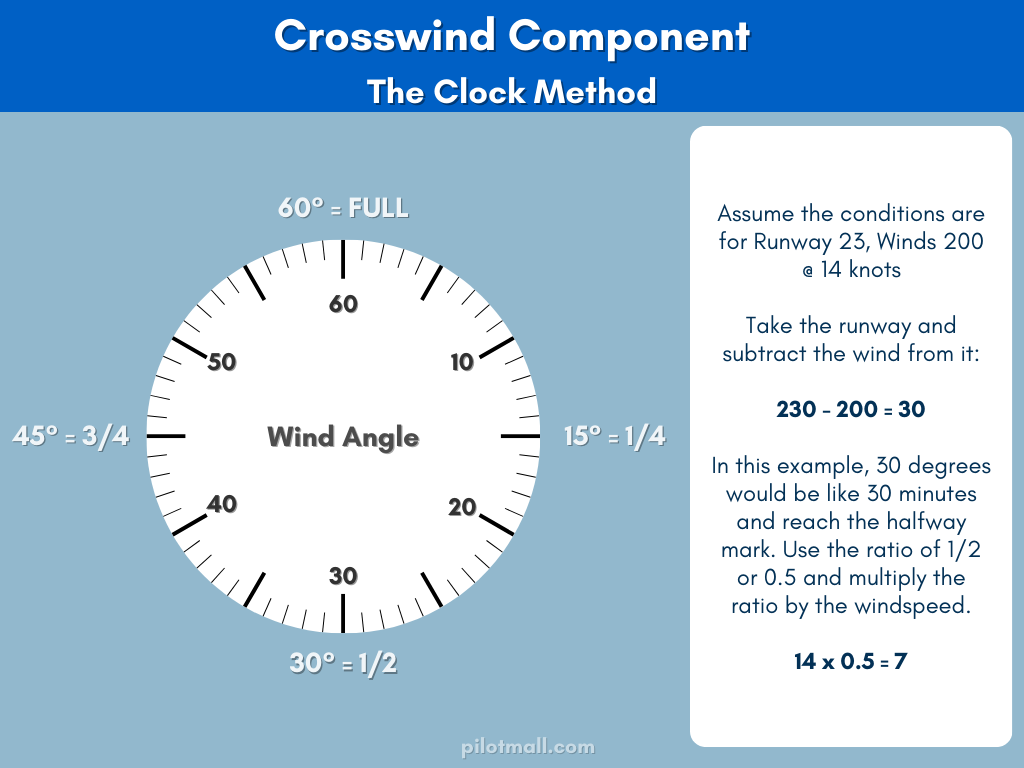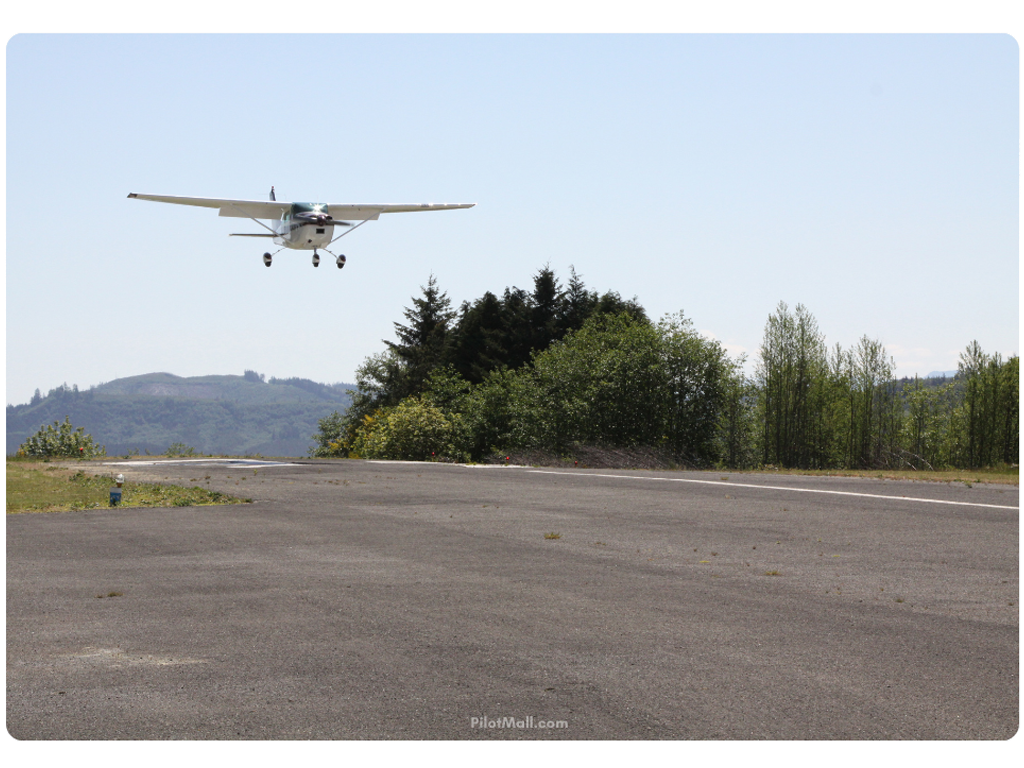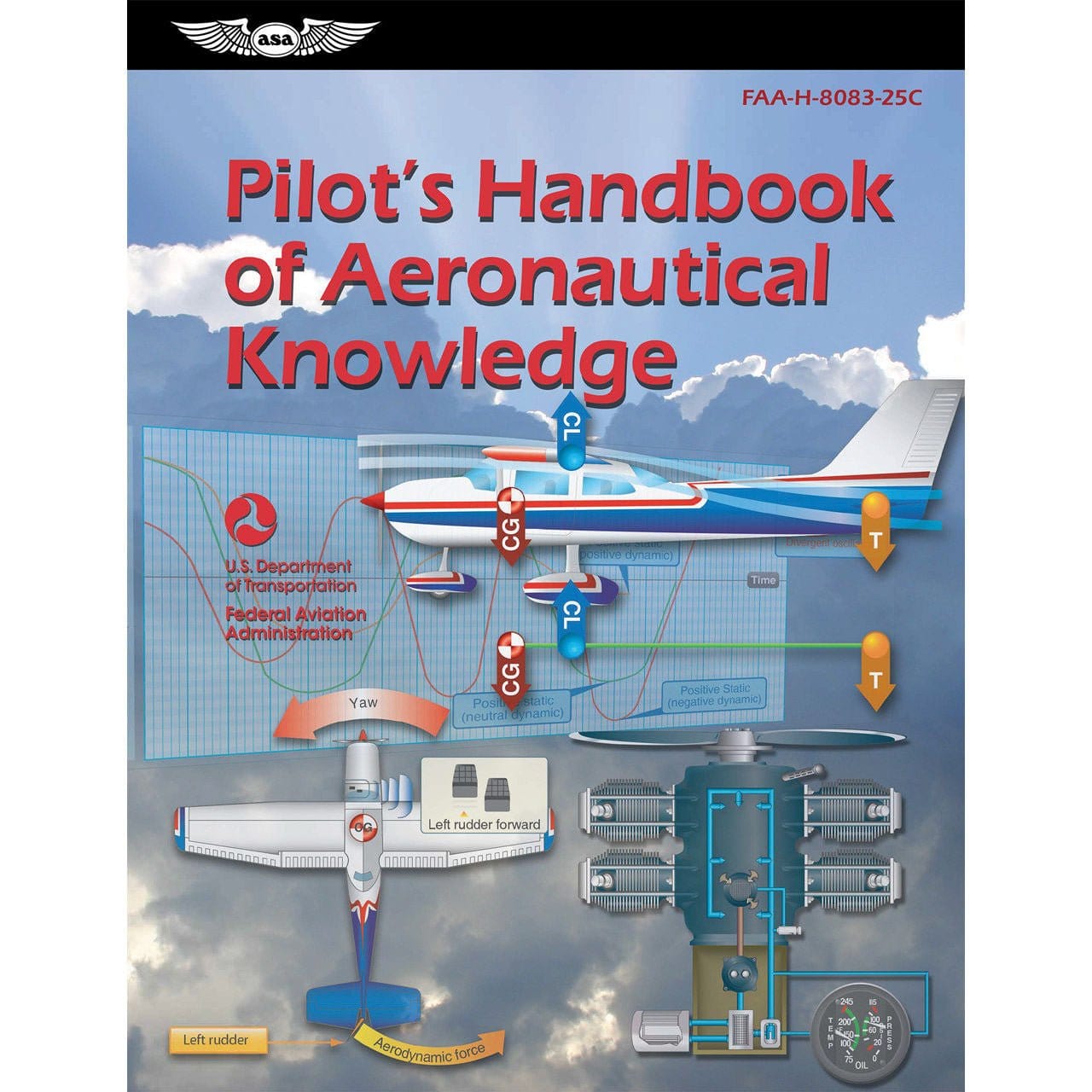The first time your flight instructor explains how to perform crosswind landings, you might feel absolutely petrified. Steering an airplane safely onto the runway centerline amidst wind gusts is no easy feat—even for experienced pilots.
But don't worry! In this article, we explore the world of crosswind landing techniques.
We'll show you how to perfect your crosswind landing skills in three easy steps, allowing you to master crosswind landings and enhance your confidence in the cockpit.
What is a Crosswind Landing?
Have you ever seen an aircraft come in for a landing pointed sideways and wondered if that was a mistake? That's exactly what you can expect when flying in crosswind conditions.
In flying, a crosswind landing is when you have to land with the wind coming at your plane from the side instead of straight ahead. When flying in the direction of the runway, the aircraft is naturally pulled to either side by the wind, meaning it won't always follow a straight line during approach and landing.
There are three crosswind landing techniques pilots typically use to navigate these types of landings and deal with strong crosswinds. These methods allow the plane to achieve a proper approach angle and decrease the amount of crosswind that touches the tail fin by decreasing drag on the wing.
The Problem with a Crosswind
When the airplane is about to touch down on the landing gear, it's wise for the pilot to correct the aircraft with the centerline runway direction. Otherwise, a gust of wind could push the aircraft sideways as it lands. The airplane's vector would not be aligned with its ground path.
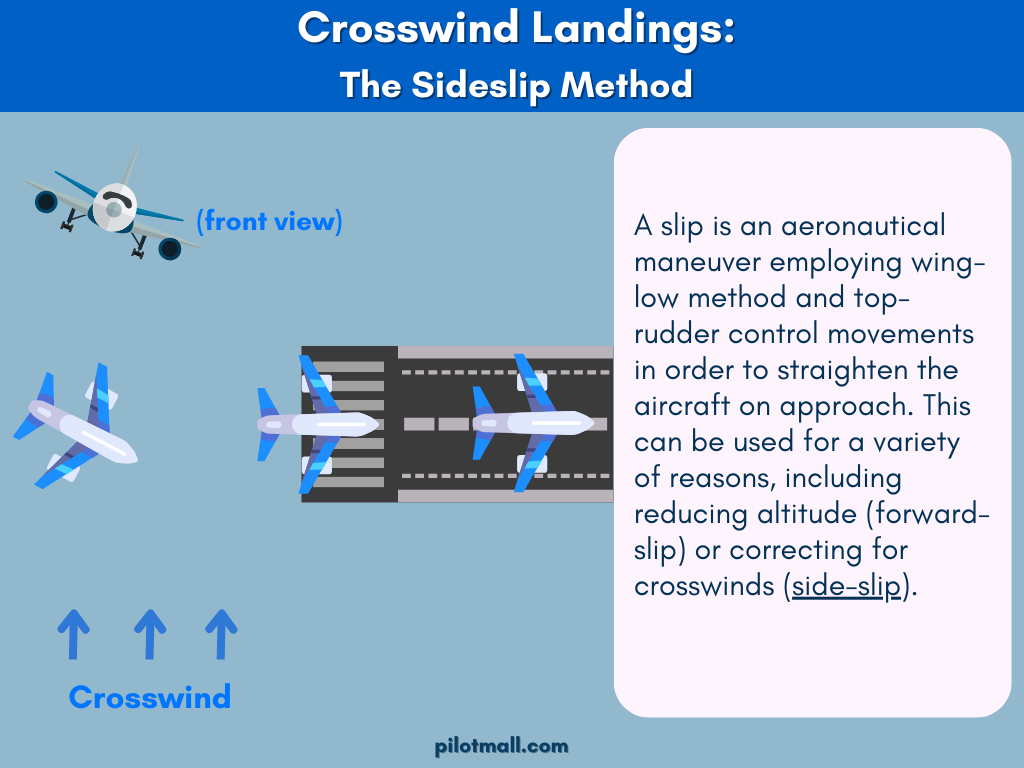
1. Sideslip Method (or Wing-Low Method)
One method for addressing crosswind landings is a Slideslip. A slip is an aeronautical maneuver employing wing-low method and top-rudder control movements in order to straighten the aircraft on approach .
This can be used for a variety of reasons, including reducing altitude (forward-slip) or correcting for crosswinds (side-slip). For instance, performing a side-slip landing will compensate for the presence of a crosswind on the final descent.
2. Crab Method
When using the crab method during a crosswind landing, the wings stay level while the nose is aligned with the wind and the flight path is centered.
Flying a crab angle during general aviation landings is preferable to slipping to avoid possible side-loading of the landing gear. At some point before touching down, you should transition from crab to sideslip in order to successfully land.
3. De-Crab Method
The goal of the de-crab method for crosswind landings is to keep the aircraft's wings leveled and centered with the runway centerline during the approach. To do this, pilots point the nose into the wind so that the plane lands slightly off from the centerline (which is referred to as crabbing).
Additional Important Steps for Crosswind Landings
While we covered the three methods you can use to tackle a crosswind landing, one of the most important things you'll need to do is figure out how to determine your crosswind component and we'll cover that in the explanations below.
Another thing that factors into this process is emergency procedures, particularly for crosswind landings.
Emergency Procedures for Crosswind Landing
-
Go-Around: a go-around can be performed if the situation is not feeling right. You'll often hear instructors say that "go-arounds are free", take advantage of them and use them. Once you have made the decision to initiate the maneuver, notify the controller that your intent is to perform a go-around.
-
Divert: If the winds are whipping and you're having difficulty landing safely, or if there's poor visibility and it's challenging to land the plane, avoiding "get-home-itis" (AKA excessive risk-taking) by diverting to your alternate airport is a reasonable thing to do.
Determining the Crosswind Component
Determining the crosswind components can prove to be a valuable part of acing crosswind landings.
Here are three methods for figuring it out:
Chart Method
-
The crosswind chart offers an efficient means of calculating the crosswind component without resorting to complex mathematics. To utilize the chart's capabilities, simply take note of the wind direction (angle) and wind speed (headwind).
Match these two readings with a point on the chart, which will yield the difference between that mark and your desired flight track.
This method provides a visual reference that can help you quickly determine the crosswind's impact on your approach and landing, providing a clear and concise solution to crosswind calculations.EXAMPLE: In the photo above, let's assume the runway is 23, A is the wind angle of 200°, B is the headwind component of 14kts, and C shows where the two meet which is about 6-7kts.
Divide by Ten Method
-
The easiest method for determining the crosswind component is the divide by ten method, which, in my personal opinion, is not only simpler but also more accurate than relying on the crosswind component chart.
By dividing the reported wind speed by ten, you can quickly gauge the crosswind's impact on your landing.
This straightforward approach simplifies decision-making during critical moments in flight, making it a valuable tool for pilots of all levels of experience.EXAMPLE: Runway 23, Wind 200°, 14kts wind speed
Divide the wind by ten, then determine the difference between the runway heading and the wind direction.
200 ÷ 10 = 20
23 - 20 = 3
Add two.
3 + 2 = 5
Divide the wind speed by ten.
14 ÷ 10 = 1.4
Multiply the wind speed and wind direction difference.
5 x 1.4 = 7kts
The crosswind component is 7kts.
The Clock Method
-
The clock method stands as a tried-and-true technique for determining the crosswind component, widely favored among pilots. Its effectiveness lies in its straightforward approach: by mentally superimposing a clock face onto the aircraft's nose, you can correlate the wind's direction with the clock's positions.
This visual aid allows for quick assessments of crosswind influence during your approach. With practice, pilots become adept at making real-time adjustments, ensuring safer and more precise landings in varying wind conditions, reinforcing its status as a go-to method in aviation.Example of the clock method:
Assume the conditions are for Runway 23, Wind Direction 200 @ 14 knots
Take the runway and subtract the wind direction from it.
230 - 200 = 30
Imagine a clock and the hands rotate from 0-60. Think of the degrees as minutes. In this example, 30 degrees would be like 30 minutes and reach the halfway mark. Use the ratio of 1/2 or 0.5 and multiply the ratio by the wind speed.
14 x 0.5 = 7
To calculate the crosswind, divide the number of minutes (or degrees) by 60 and then multiply this value by the wind speed. If the difference is 60 or more, you can assume that the crosswind is equivalent to 100% of the wind speed.
How to Deal with Downdrafts
Rough terrain can produce downdrafts, which can be dangerous. Deadly, unpredictable downbursts and microbursts are the worst-case scenario. Pilots also have to overcome crosswinds that buffet them sideways when landing; they must manage this force to stay on the runway centerline for safe arrival.
Downbursts unleash destruction much like a tornado, often leaving a circular pattern of damage radiating away from the epicenter.
How to know if you've hit a downdraft?
-
Once you enter a downdraft, you'll feel some turbulence and then witness your altimeter quickly decreasing even when the aircraft appears to be level. Your vertical speed indicator will still show a descent rate, even with power applied.
How to avoid downdrafts?
-
Checking the Weather
Prior to starting your flight, discover the surface wind forecast for the time of your arrival. Keep up to date on all ATIS information throughout the duration of your flight.
-
The strongest downdrafts are usually located close to mountains and areas of thunderstorm activity.
-
Lookout for lenticular clouds, they are those wispy, lens-shaped clouds, as they are a surefire indicator of mountain wave turbulence.
-
Look for a surface winds chart from any offical source.
-
Check TAFs and all relevant information related to aviation weather.
Landing Order
-
Check the wind
Check ATIS or with ATC for the most up-to-date weather conditions. If you are at a non-towered airport you can check the wind sock.
-
Watch Your Speed
Make sure your airspeed is stabilized for your final approach.
-
Determine Flaps Amount
Check the POH for your aircraft and determine if using flaps is better for crosswind landings in your aircraft. For instance, Cessna 172 pilots prefer to only use two notches of flaps when dealing with crosswinds.
-
Transition to Centerline
Whichever method you choose to use to angle your aircraft towards the runway, make sure you're able to transition the aircraft to follow centerline before touching the landing gear on the runway.
-
Increase control inputs
As the plane begins to slow down and settle onto the runway, the controls will become less responsive. You'll need to gradually apply more rudder and aileron input as you touchdown on the runway in order to stay on it.
-
Upwind Wing
When landing in a crosswind, pilots are trained to land their plane one wheel at a time. It's always best to start with the upwind wheel that is facing the direction of the wind.
-
Correct for Winds on Landing Roll Out - Aileron and Rudder Deflection
After successfully landing, keep control of the aircraft. You might need to steadily increase your aileron control into the wind. As the aircraft speed decreases, increase rudder input to keep the aircraft centerline.

-
Should I use flaps in a crosswind landing?
In crosswind landings a pilot might feel more comfortable using a higher approach speed and a lower flap setting for their final approach, but this does not mean landing the aircraft with no flaps is advised.
Flaps help to stabilize an aircraft and the fewer flaps that are used the more runway is needed for landing. Follow what is outlined in the POH provided by the aircraft manufacturer regarding flaps.
-
How to do crosswind landing in a Cessna 172?
Typically, pilots land in crosswinds with a Cessna 172 using two notches of flaps, versus using full flaps.
However, this might vary depending on your particular area and weather conditions. Consult a flight instructor in your area to gain more insight.
-
What is the crab technique for crosswind landing?
The crab method involves crabbing into the wind in order to prevent drifting left or right and helps to maintain centerline.
-
What flap settings should I use for taking off in a crosswind?
You will want to use the minimum flap setting when you are trying to take off in strong crosswinds.
-
How hard are crosswind landings?
The degree of difficulty for each pilot varies depending on their innate aptitude, experience, and most importantly the weather conditions.
The aircraft itself also has its limitations, especially for small general aviation aircraft (light aircraft). Crosswind landings need intensive focus and control inputs to make sure the plane settles down on the runway safely.
Check out this video for examples of how even airline pilots never under-estimate crosswind landings:
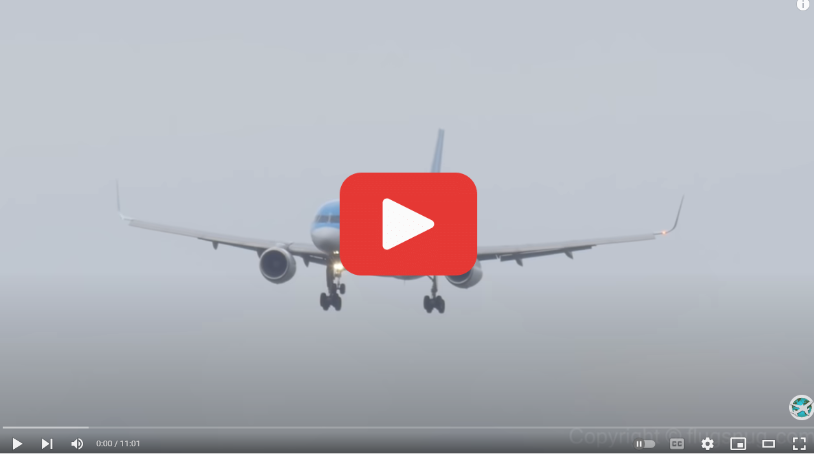
-
Which wheel touches first in crosswind landing?
With a crosswind landing, avoid allowing the main landing gear(nose wheel) to touch first. You will be landing one wheel at a time in this order:
-
Upwind Wing (the wheel and wing facing the direction the wind is blowing from, keeps the upwind wing low)
-
Downwind Main
-
Nose Wheel
-
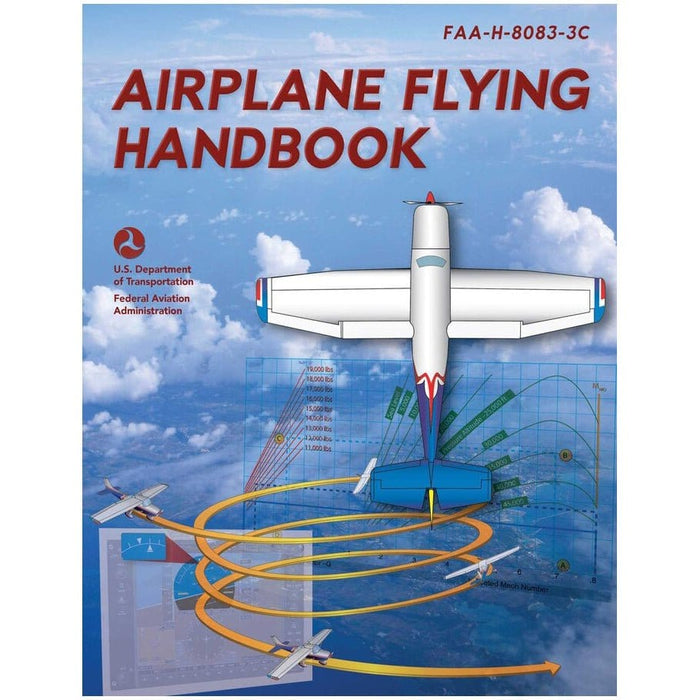 |
ASA Airplane Flying HandbookFor decades, the FAA's Airplane Flying Handbook has served as the foundational resource on the numerous flight maneuvers fixed-wing pilots must master. This heavily updated version has been expanded to address new areas of concern including runway incursion avoidance, positive exchange of flight controls, checklist usage, and jet & turboprop operations. |
Takeaway
Mastering crosswind landings is an art that every pilot can master with the right approach. Remember, a good crosswind landing is all about precision, and it begins with practice.
When you practice crosswind landings, start with a small crosswind component and gradually work your way up as your confidence grows.
Embrace the challenge of the final approach, knowing that these three easy techniques we've shared with you can transform those nerve-wracking moments into moments of triumph.
Go ahead, take to the skies, and practice those crosswind landings—you'll find that with dedication and patience, you'll become a master of the craft, confidently navigating even the gustiest of conditions.
Fly safe up there flight friends!
Want to Learn about More Landings?
A safe pilot is an informed pilot. Check out these links!
Did you find this article helpful?
Do you think we missed anything important? Let us know in the comments below!


